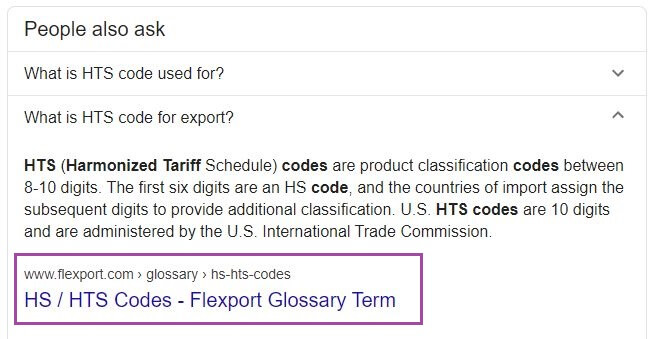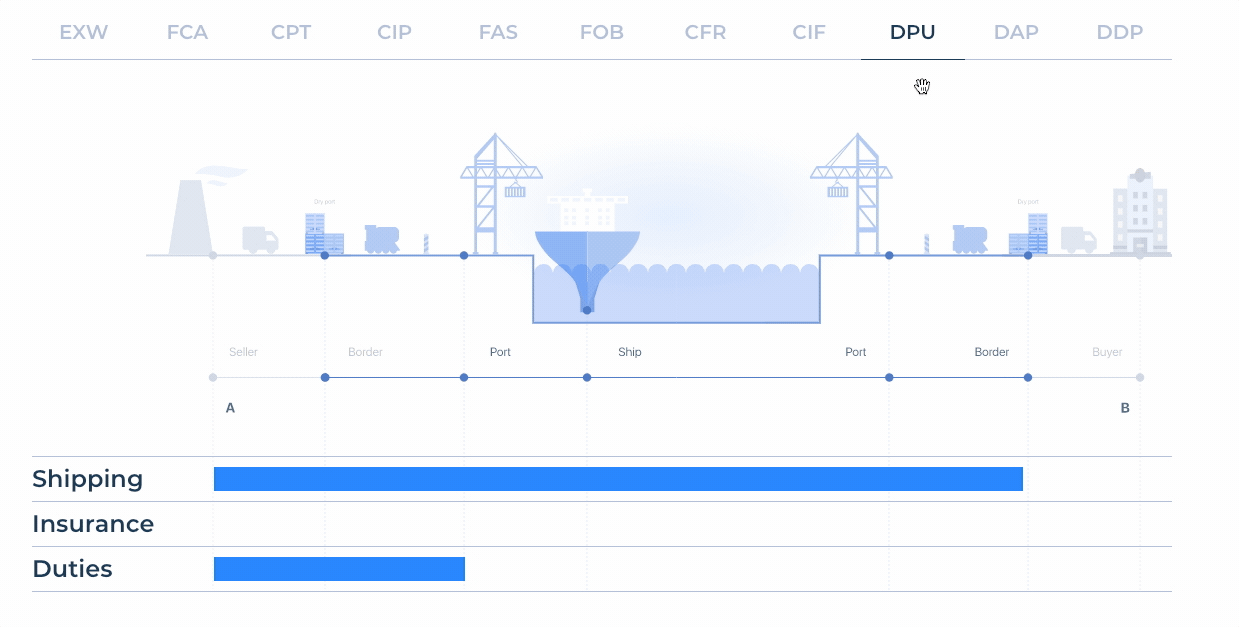The Bill of Lading.
It’s arguably the most important document in logistics. It is to freight cargo what boarding passes are to plane passengers.
Oftentimes, it is the culprit of cargo delays and unexpected fees.
Getting it right is the bane of all shippers.
But we’re not here to talk about the Bill of Lading today. We’re here to talk about what this innocuous-sounding document represents: the complexity of the logistics industry and the key role content marketing plays in it.
Every single logistical procedure involves so many different players and processes that seamless execution is near impossible.
As an industry that can sometimes raise more questions than answers and one in which new trends are constantly emerging, that means even the most seasoned can struggle to stay on top of everything.
That’s why logistics companies must know how to deliver the who, what, where, when, why, and how of logistics. Information needs to be clear and perspectives need to be fresh.
And in this digital world where 87 percent of B2B buyers say the content they come across online has an impact on their selection of providers, content marketing has an increasingly important role to play in the execution of these messages.
The industry is synonymous with complexity. But that is a double-edged sword—a hindrance for some and an opportunity for others.
Notwithstanding, there are some in the industry who have earned the right to be called maestros of content marketing.
In this article, we’ll present to you five logistics companies that have mastered content marketing and what they did right. If you’re looking for some inspiration, this a good place to start, so read on.
The complex logistics industry is a double-edged sword of #contentmarketing—a hindrance for some and an opportunity for others.Click To TweetFlexport
We’re talking about content marketing in logistics. So it would be pretty blasphemous not to begin the list with Flexport.
Flexport is a digital freight forwarder that stormed onto the logistics scene seven years ago and is worth at least $3.2 billion today.
The San Francisco-based company understands the value of content marketing, is doing it right, and boy, are they proud to show it off.
Their main navigation menu has just five sections and one of them is —yep, you guessed it— “resources”.
Hovering over it brings up a menu with subcategories and a special collection of the industry’s and company’s top news they’ve very aptly called “latest & greatest”.
Notice the variety of content they publish?
Where most companies would only engage in blog efforts and maybe dabble in long formats like ebooks, Flexport takes it a million steps further with market updates, videos and webinars, white papers, tariff insider, etc.
Aside from their blog, where posts are being published every few days (that takes a lot of dedication and effort), they also have a “help center”.
It’s categorised into many different categories (and not to mention availability in Chinese) in a sidebar that facilitates navigation and filled with short and straight-to-the-point articles that answer basic “how to” and “what is” questions.
Its glossary section is also a fantastic resource for inexperienced shippers trying to wrap their heads around the gazillion and one shipping terms. Plus, it’s a great way to get featured in Google’s “People also ask” box.
Flexport’s content is clearly designed to tackle and meet the needs of its clients at all stages of the sales funnel.
From a seasoned shipper looking for the latest news on a particular trend or topic to a novice who just wants to ship a couple of pallets and needs to educate himself a little on this complex industry, Flexport’s website is an absolute gold mine of information.
(Have we also mentioned that they hold several webinars a month?)
Through their exhaustive content marketing efforts, they are able to arm users with the shipping information they need, raise brand awareness, and provide both clients and prospects better experiences.
In the golden words of Mike Ruby, Flexport’s Creative Director himself:
“Content experience is customer experience.”
We couldn’t have said it better.
Xeneta
If there was an award for the best logistics blog, only the cruel would deny Xeneta of at least a nomination.
Not only does their content marketing team publish blog posts frequently, but their posts are also extremely timely.
At the time of writing, two out of their three latest posts posted within two weeks of one another are related to the coronavirus and its effect on logistics.
Impressive.
But what we really like about Xeneta’s blog is something we don’t regularly see on other company blogs: its use of its Subject Matter Experts (SMEs).
A quick scroll through their blog unveils not one, not two, not even three, but many other contributors. That includes not only their CMO and CEO but also writers from the rate management team, product team, customer advocacy team, customer success team, etc., each writing about what each knows best.
Patrick Berglund, the CEO, analyses the effect of the coronavirus on shipping rates and raises insightful questions about possible responses from shipping carriers.
Christian Schmans, a data analyst, writes about a product update in which he translates complex data into simple words to explain a change they are implementing.
Sheetal Patel, a customer success manager, provides advice on how clients (shippers) should deal with the uncertainty surrounding a recent regulation.
I don’t think we need to go on.
Combine insight from the industry’s top influencers, knowledgeable analyses by leading experts, and passionate content writing and you’ve got yourself a pretty lethal combination of content marketing ready to kill and convert.
iContainers
Given the complexity of the logistics industry, if there’s one sector in which well-developed, long-format content can perform, that’s here.
iContainers, a Spanish online freight forwarder, takes advantage of the industry’s complexity to publish in-depth content such as ebooks and guides not only as part of a lead generation campaign but also openly to inform and educate.
Their guide on the Bill of Lading in Spanish ranking first on Google is a clear example of how well this strategy has worked out for them.
The guide is filled with comprehensive and detailed information—everything you need to know to understand just what a Bill of Lading is and how it works. It also has graphics scattered throughout to break up the text and make the content easier to digest.
Given the piece’s extensiveness, it could have easily been uploaded as a downloadable guide. But it’s one of the most important documents in logistics and iContainers’ competitors are sure to also have a similar piece. So putting a formula between readers and the information may only serve to impede.
This is a good example of how quality content with an added value for readers helps with SEO. The depth of the piece and keyword density in a long-format such as this (3,500+ words) also certainly helps.
Freightos
It’s quite impossible to talk about content marketing in logistics without mentioning Freightos.
They are true masters of the content marketing craft: emails that are pleasant to read, quarterly reports of the latest industry news, guides, ebooks, etc.
But what they really stand out for is their online tools such as tariff calculators, port code finder, and above all, the Freightos Baltic Index (FBX).
Freightos’ FBX is an index that reflects daily price movements of the various international shipping rates.
It’s a great example of what good content marketing is and one that you certainly won’t find in any Content Marketing 101-type handbooks because it actually goes beyond the basics of content marketing.
It offers an interactive view of live (I repeat, live) shipping container prices, their evolution, and trends.
The icing on the cake for FBX is that it is an absolute magnet for digital media relations. As the only daily index in the sector, it’s a priceless tool not just for those within the industry but journalists as well.
Case in point: The FBX —and Freightos, obviously— is constantly quoted by top media including the New York Times, Bloomberg, and The Wall Street Journal.
Searates
If we had to choose just one topic of interest in the logistics sector, it would, hands down, be Incoterms. Incoterms are a set of rules that determine the responsibilities of the importer and exporter in an international shipment.
It’s a contentious topic within the industry and one whose popularity never ceases. That’s due in part to the legal and fiscal consequences a misinterpretation can result in and the fact that Incoterms are revised every ten years.
Just recently, the latest set, Incoterms 2020, was announced by the International Chamber of Commerce.
With an average search volume of 12,100 (SEMrush data) monthly searches in Spain alone, that top spot on Google is certainly as juicy as it is challenging to attain.
But where there’s demand, there’s competition.
There are many who search, but also many who are dying to provide information about Incoterms and rank.
In terms of Incoterms content, differentiating yourself from your digital competition can be a tough challenge. In fact, most logistics companies resort to publishing variations of the same content: a sad description of each Incoterm and a supporting graphic.
Enter: Searates. A classic example of producing the same content but with some out-of-the-box thinking.
Like their competitors, their Incoterms 2020 page consists of a list and the description of the terms and a graph. But good design and organisation are where they’re different.
The first thing we see on the page is the list of Incoterms. But next to it is the previous not one, but two versions of the Incoterms, which provides for a more comprehensive overview of the changes.
That’s not all. Further down, they’ve substituted what most would have as a still graphic with an interactive tool that allows visitors to visualise the differences between each Incoterm.
On the surface, the potential for content in logistics can appear pretty dry. It certainly isn’t as colourful as content marketing for hotels or as flavourful as writing about gastronomy.
So you can be forgiven for wanting to give up on publishing exciting content for such a “boring” industry.
But as these five logistics companies have proven, when done right, content marketing in logistics can be just as eye-catching, varied, and rich. Its complexity adds to the challenge, but that just means there are more ways to get creative.
When done right, content marketing in logistics can be eye-catching, varied, and rich. Its complexity adds to the challenge, but that just means there are more ways to get creative. Click To TweetWant to learn more?
- 6 exceptional examples of brand storytelling in content marketing
- SEO content writing: The importance of angle in 10x content
Lin’s an ex-journalist who’s found her new love in content marketing. In her spare time, she’s on a secret conquest to find a solution to never having to cut her nails again.









